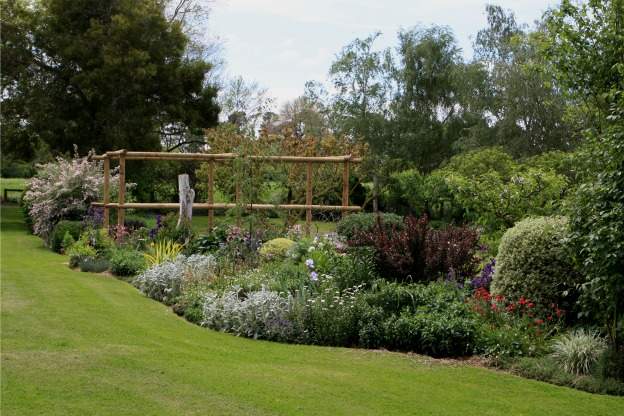
In the fall, we often think about what has worked in our garden in the past and the revisions that we want to make next spring.
Most flower gardeners have either beds or borders or both. By definition, a border is just any planting that is longer than it is wide. Borders usually have a back and are used as landscape dividers to separate, for example, the lawn from other elements, such as paths, steps, walls, fences, or a neighboring property.
A border may consist of all shrubs or all flowering plants or all vegetables or a mix of different plants. Public gardens and large estates often have sweeping expanses of lawn with borders that are hundreds of feet long containing thousands of plants.
On smaller properties, borders-straight or curved-may be only twenty feet long or less.
In contrast, garden beds are free standing. If surrounded by lawn they are typically referred to as island beds, and they can be tucked into nooks and crannies, or nestled against a structure, or surround a tree.
Most beds are quite small and can be any shape that the gardener wants. Occasionally, you may see a series of beds set into a large lawn to create geometric patterns of varied shapes and sizes. The edges of beds, however, should be well defined and maintained. In formal gardens they are often edged in boxwood, but in cottage-style gardens, plants will be encouraged to spill over the edges of the beds.









